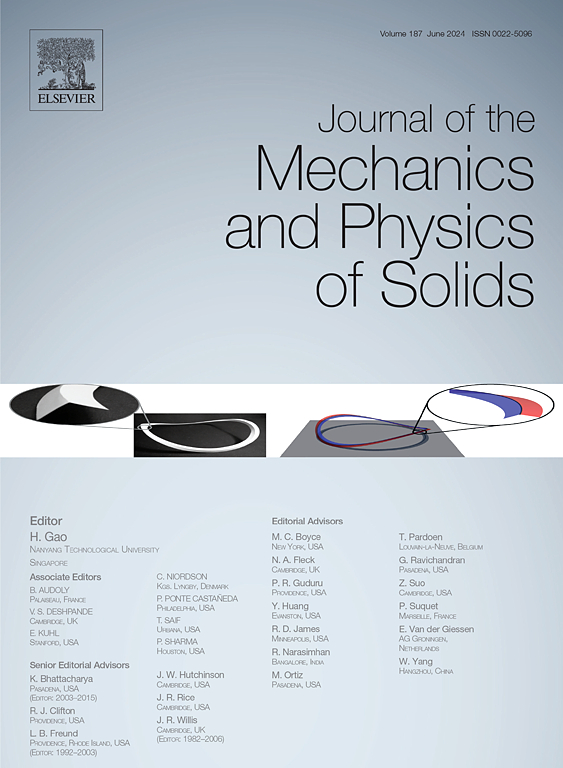Normal dynamic adhesion of an infinite elastomer layer on a statistically rough substrate
IF 5
2区 工程技术
Q2 MATERIALS SCIENCE, MULTIDISCIPLINARY
引用次数: 0
Abstract
The dynamic adhesion properties under different pulling speeds on rough substrates have potential value in practical applications. Our primary objective is to ascertain the influence of the pulling speed on the normal stress required for delamination when an infinite elastomer layer delaminates from a statistically random rough rigid substrate. We decouple the interface delamination velocity from the pulling speed based on the deformation of the elastomer during pull-off procedure. Based on the balance of interface stress and elastomer stress, we obtain the varying interface delamination velocity with constant pulling speed. By combining the Greenwood-Williamson statistical model of rough substrate with Muller theory of dynamic adhesion, we obtain a dynamic adhesion model to describe the adhesion force between the elastomer and the rough substrate under various interface delamination velocities, and deduced the pull-off stress σpull-off as a power function of the pulling speed vU, that is σpull-off ∝ . The exponential kexp of the above power function is studied as the pulling speed range of 0.01 ∼ 10 mm/s, the elastomer modulus range of 49.4 ∼ 4000 kPa and the RMS roughness range of 10−4 ∼ 10−7 m. Through the experimental verification when the RMS roughness of substrate Zrough and the modulus of elastomer E satisfy 20×(zrough/zk) < (E/Ek)−0.354 (here zk = 1 mm, Ek = 1 kPa), the exponential is constant and independent of roughness or modulus. High roughness or high modulus will result in this exponential increase due to the change of the pressing depth probability density function. This finding is expected to simplify the analysis of the dynamic adhesion on the rough substrate and provide ideas for the rough substrate adaptive design of adhesive materials.
求助全文
约1分钟内获得全文
求助全文
来源期刊
CiteScore
9.80
自引率
9.40%
发文量
276
审稿时长
52 days
期刊介绍:
The aim of Journal of The Mechanics and Physics of Solids is to publish research of the highest quality and of lasting significance on the mechanics of solids. The scope is broad, from fundamental concepts in mechanics to the analysis of novel phenomena and applications. Solids are interpreted broadly to include both hard and soft materials as well as natural and synthetic structures. The approach can be theoretical, experimental or computational.This research activity sits within engineering science and the allied areas of applied mathematics, materials science, bio-mechanics, applied physics, and geophysics.
The Journal was founded in 1952 by Rodney Hill, who was its Editor-in-Chief until 1968. The topics of interest to the Journal evolve with developments in the subject but its basic ethos remains the same: to publish research of the highest quality relating to the mechanics of solids. Thus, emphasis is placed on the development of fundamental concepts of mechanics and novel applications of these concepts based on theoretical, experimental or computational approaches, drawing upon the various branches of engineering science and the allied areas within applied mathematics, materials science, structural engineering, applied physics, and geophysics.
The main purpose of the Journal is to foster scientific understanding of the processes of deformation and mechanical failure of all solid materials, both technological and natural, and the connections between these processes and their underlying physical mechanisms. In this sense, the content of the Journal should reflect the current state of the discipline in analysis, experimental observation, and numerical simulation. In the interest of achieving this goal, authors are encouraged to consider the significance of their contributions for the field of mechanics and the implications of their results, in addition to describing the details of their work.

 求助内容:
求助内容: 应助结果提醒方式:
应助结果提醒方式:


